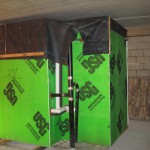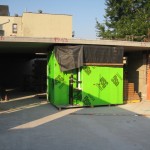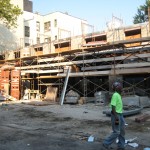Kanban Pull System
Tags: Concern MacDougal Apartments, High Quality Construction, Kanban Pull System, Lean manufacturing, modular building, Park Terrace, Prefabrication
As the Ashburton and McDougal Project are nearing turnover to their respective owners, the plant “Kanban Pull System” project is out of the planning stages into the implementing stage. The Japanese word, “Kanban” can be translated into English as “Sign Board” and is an important part of our “Pull System”. Taichi Ohno, the creator of the Toyota Production System, devised a plan in the 1950’s to have demand and actual production determine quantity and timing of re-orders in purchasing. This plan was thought up into existence after Mr. Ohno and the Toyota team visited a United States Supermarket and could not believe its efficiencies. Using Visual Re-fill points (flags, measuring rods, marked bins, three bins, etc.) and Re-order points coupled with a Daily Patrol and thorough 5S, we can achieve a “pull system” instead of the very wasteful “push system”.
Our System is nearly 50% complete and fully implemented by November of 2011. The 5S methodology will give our plant a very aesthetically pleasing environment with a clear vision of continuous improvement in the Inventory Scheduling and Control Systems.
The initial Value Added Space Percentage was recorded at 60% (40231/66816). After the 5S, we are estimating at improving that number to 80% then continuously improving from there. The 5S methodology consists of:
- Sorting – Recognizing waste and discarding
- Straightening – Creating a set place for all materials and processes
- Shining – Keeping things clean
- Standardizing – Everything should be consistent and identical. Every process and worker should know exactly what their role’s and responsibilities are.
- Sustaining – This is easily the most difficult part of the process and a clear system of sustaining the gains made while continuing to improve must be part of the corporate charter.
Come out for a tour and see how our already efficient production process and soon to be Lean Supply Chain will change the face of construction in New York!





